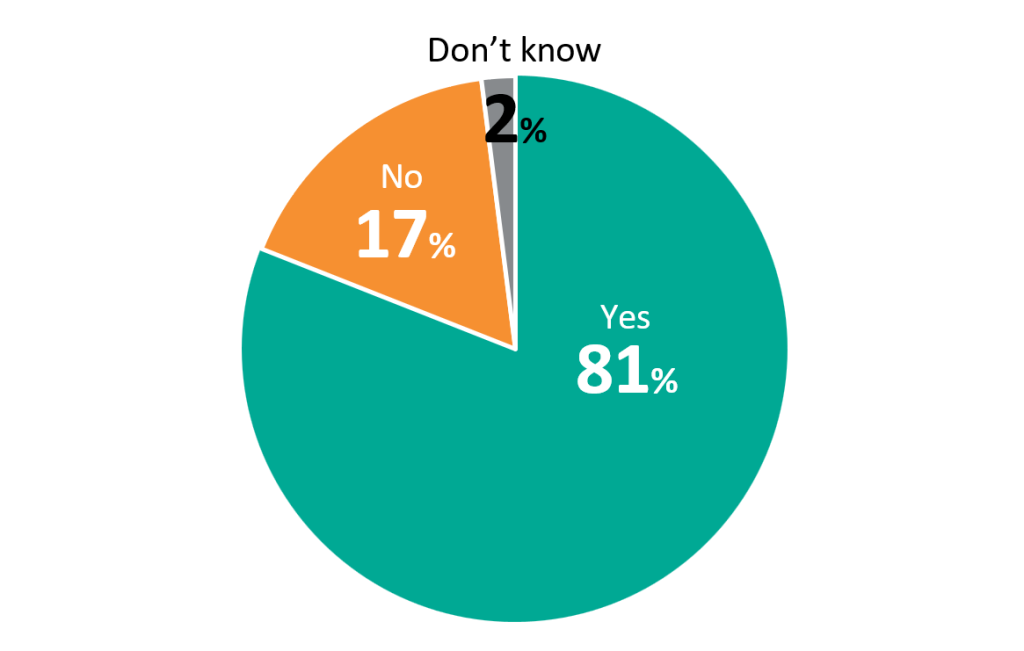For the energy transition to be successful, Australians will need to change the way they cook their meals, heat their homes, and fuel their cars. We’ll be asking consumers to do a lot. But this assumes they’ll know what to do, when to do it, and will act.
Consumers are reliant on good information to be able to do all this – and they need to receive that good information via good communications. So is this happening? Apparently not.
In our first phase of research into consumer energy information we discovered that consumers are overwhelmed with the amount of complex energy information out there. This means they need less information, not more. But to ensure cut through, they need to get the right information, at the right time, from the right sources.
In our second phase, we commissioned The Insight Centre to conduct a national survey of 2500 household energy consumers to hear directly from them about what cuts through and how best to reach them.
Here’s what we found.
Read the full report (PDF, 2.13MB)
Consumers want to reduce their energy use but often don’t know how
The good news is that there is appetite amongst Australians to act, and they are already doing so. Almost all households (89%) want to learn more about how to reduce their energy use and costs. With 84% of people very concerned about increasing energy bills and general cost of living pressures – this is no surprise. As a result, 81% of households have taken steps to reduce their energy use in the past 12 months.

In the last 12 months, have you taken any steps to reduce your energy use?
However, when we dug deeper, more than half of households have not taken the actions that provide the best bang for buck. In fact, households had, on average, taken only 25% of the potential actions they could be adopting. This means there’s a lot more on offer which households could easily, and cost-effectively be doing.
So what’s stopping people from taking action?
- They think it costs too much to make the changes (31%)
- They don’t know what else they can do to further reduce their usage (25%)
- They think they are already doing everything they can (24%)
Consumers aren’t getting the information they need
Despite the saturation of information on energy out there, consumers are telling us that they are not getting the information they need. Only one in five households have enough information about how to reduce their energy use. When consumers have gone looking for information to help them reduce their energy use and bills, many have found it difficult to find the right information, that is relevant to them and their situation, and easy to understand.

Getting consumers off first base
Evidently, most consumers are still at the very start of their energy journey. To get them off first base, there is a need for simple, clear communications on the easy, high impact steps consumers can take to reduce their energy use and costs.
This is what the research told us households will respond to.
Who?
For consumers to listen and act, they need to hear from voices they trust.
The most trusted sources of information about energy and/or ways to reduce energy bills are:
- Consumer advocacy organisations such as Energy Consumers Australia and CHOICE
- Federal government
- State/territory governments
What?
Households have told us that they are most interested in first finding out about the following topics:
- Breaking down how different energy uses/major appliances contribute to bills
- How to save money by managing electricity use during peak and off-peak hours
- The impact of changing the temperature settings on heating and cooling systems on energy bills
Where?
We need to make sure that we are sharing information with households in places that they’re seeing. Households reported that the main channels they’ve used to find out more about energy have been internet searches, family and friends, consumer advocacy organisations, and energy retailers.
Households are using free to air TV, pay TV or streaming services, and the internet (especially Facebook, YouTube, Instagram, and news sites).
Digging Deeper
Based on the size and geographical variations across Australia, you might suspect that consumers have vastly different needs. However, the research found that there are far more similarities than differences. Instead, what differentiates consumers is their ability to act, confidence in their agency, and perceived need to respond. Based on these, we have segmented consumers into five groups and identified how they want to be communicated to and on what topics.
The report provides further details about the characteristics of each segment, their specific needs, and how to best reach them.
Read the full report (PDF, 2.13MB)
Consumers need certainty and help
This research has revealed that while there is appetite to act, consumers will need significant coordinated help to bring down their energy bills and manage their energy use. Information campaigns can go some way to providing support for consumers but they are only the tip of the iceberg of the support that consumers will need to manage the transition. Consumers require tailored help based on their needs, motivation, and abilities on a wide range of topics. They need certainty and support to make the right decisions. And they need a trusted voice to practically step them through what they need to do and when they need to do it.

